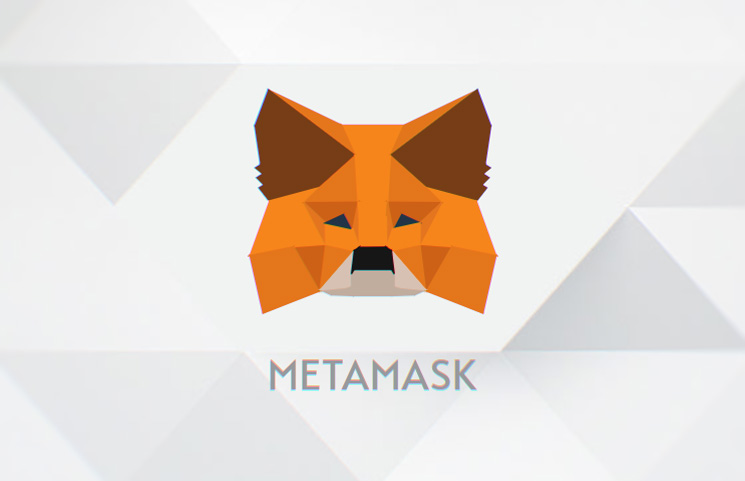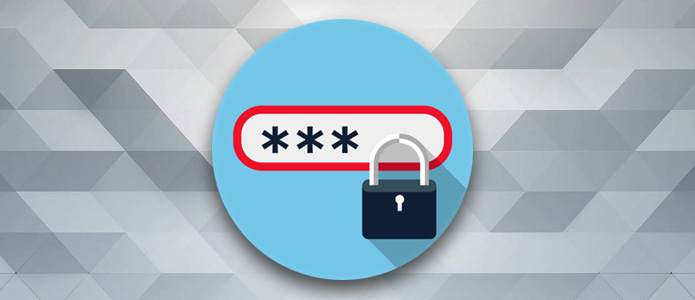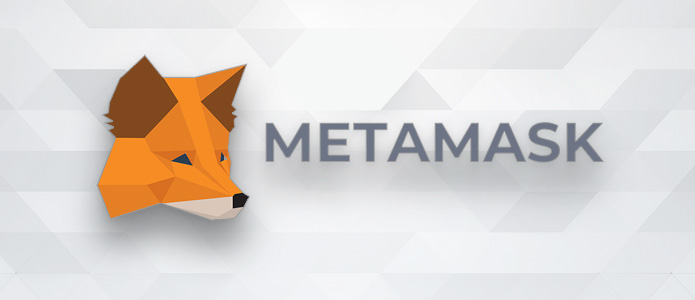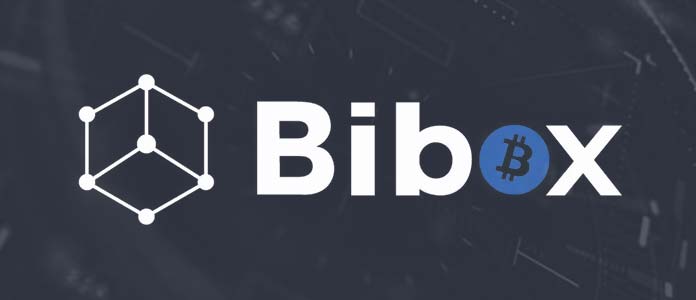Cryptocurrency Investing
Bitcoin Trading: Expert Review Guide On Exchanging Cryptocurrencies?

Let’s start by answering the question of what is trading and how it is different to investing in Bitcoin. When people put money into Bitcoin, this typically means that they are buying Bitcoin for the long-term. To put it differently, they believe that the price of Bitcoin will go up, regardless of the ups and downs of the market.
People usually invest in bitcoin because they believe in the technology, team, or ideology behind it. Bitcoin investors are infamous for HODLing in the long-term, which is a term that was popularized by the Bitcoin community, a typo for “hold” in a old 2013 post in the BitcoinTalk forum.
Bitcoin investors HODL for the long term, while Bitcoin traders buy and sell Bitcoin in the short term, or whenever they think they can make a quick profit. Traders look at Bitcoin as a way for making fast profits, and sometimes they don’t really consider the technology or the ideology behind what they trade.
Yet people can still trade Bitcoin even if they are a firm believer. And many people out there invest and trade at the same time. But why are so many people trading bitcoin and other altcoins all of a sudden? There a two reasons for this.
The first is that Bitcoin is volatile in nature, which means that people can make a large chunk of cash if they can time the market correctly. Secondly, unlike traditional investments, Bitcoin trading is open at all hours of the day and night. Most markets like stocks and commodities have a set opening and closing time. While with Bitcoin, people can buy and sell whenever they please.
Finally, Bitcoin has an unregulated landscape, which lowers the barrier to entry without the need for a drawn out identity verification process.
Trading Method types
There are a number of different types and styles of trading. For example, day trading involves making numerous trades throughout the day, and then attempting to profit over the short-term price movements. Day traders then spend a considerable amount of their time staring at a computer screen, and then when they’re finished, they usually close all of their trades.
Scalping
One strategy named Scalping is a particularly popular strategy, and one that many people are talking about today. Scalping attempts to make a large amount of money on tiny price charges, and it’s sometimes referred to as picking up pennies in front of a steamroller. Scalping focusing on the here and now, and it’s based on the idea that making a small amount of money limits the amount of risks one exposes themselves to and then creates advantages for traders. Scalpers often make hundreds of trades in a single day.
Swing Trading
The others strategy is swing trading. Swing trading attempts to take advantage of natural swing of the price cycles of Bitcoin and other currencies. Swing traders try to determine the beginning of a certain price movement and then enter the trade. They then hold on until that movement dies out and exit with the profit. They attempt to see the big picture without always looking at their computer screens. Swing traders are able to enter a position and then hold it open until they get their desired results.
So now that you know a little more about trading, you may wonder… How does it actually work? How is someone able to predict how Bitcoin prices will change?
The short answer is that it’s not possible for someone to predict what will happen with Bitcoin. But some traders have found particular patterns, methods, and rules, that allow them to make money over a long enough time scale. Nobody only makes profitable trades, but here is an idea: at the end of the day, traders should see a positive balance, although they may have lost some money along the way.
Fundamental vs. Technical nalysis
Generally, people follow two methods when they trade Bitcoins: fundamental analysis and technical analysis.
Fundamental analysis looks at the bigger picture of the currency. In the case of Bitcoin, fundamental analysis looks at Bitcoin’s industry, news, and technical developments of the network, regulations, and anything else that may affect the price of Bitcoin.
This method looks at Bitcoin’s value as a form of technology, which is independent from price, as well as a outside forces to determine what will happen to that price. For instance, if China decided to ban Bitcoin, then the analysis would predict that the price would probably drop in value.
On the other hand, Technical analysis predicts the price by studying market statistics, like past price movements and trading volumes. Technical analysis identifies patterns and trends in the price, leading to suggestions of what will happen to the price in future.
Technical analysis makes the following assumptions: regardless of what’s happening in the world right now, the price movements of Bitcoin will speak for themselves, and could tell some kind of story that will let people predict what will happen next. So which method is better? There is no answer, but a health mix of both will probably lead to the best results.
Understanding Bitcoin Trading Terms
Let’s continue by breaking down some of the most confusing terms and stats that you’ll come across for most of the exchanges.
Bitcoin exchanges are online sites where buyers are sellers and matched automatically. An exchange is different to a Bitcoin company that sells you coins directly, such as Coinmama. This type of company will typically, but not always, charge a higher fee.
An exchange also differs from marketplaces such as Local Bitcoins, where buyers and sellers communicate together in order to complete a trade. The
The Order Book
An order book is a total list of buy and sells orders that are listed on the market’s order book, which can then be viewed on the exchange. Buy orders are called bids, as people are literally bidding on the prices to buy bitcoin.
Sell orders are called asks, since they are a literal asking price that the sellers request. This means that whenever people refer to the price of bitcoin, they are actually referring to the price of the latest trade made on a specific exchange. This is important to keep in mind because there is not a single, global Bitcoin price that each person follows. Sometimes, the price of Bitcoin in other countries will differ from the price in the US, since the primary exchange in these countries include different trades.
Price alone, you will also see the terms high and low. These terms refer to the highest and lowest prices over the last 24 hours.
Another term is volume. Volume represents that number of total bitcoins that have been traded in a set timeframe. Large trends are usually followed by large trading volumes, while weak trends follow low volumes.
A healthy trend upwards often comes with high volumes (when the price goes up) and low volumes (when the price decreases). If you are seeing a sudden change in direction for the price, experts recommend that you check how significant the trading volume is, so you can determine if it’s only a minor correction or a beginning for an opposite trend.
Now you know most of the terms that you’ll come across on the average exchange. It’s now time to move on to the types orders that you can place on an exchange.
Exchange Types of Orders
A market or instant type of order refers to an order that gets instantly fulfilled at any price point. So, if you put a market order in to buy five Bitcoins, which will get you the cheapest sellers possible, until it earns enough sellers to hand over 5 Bitcoins. Another way of looking at it is that you might end up buying 3 Bitcoins at 1 price, and then another 2 at a higher price. For a market order, you don’t stop buying Bitcoin until the set price is reached.
With market orders, you could end up paying more than you had planned, so it pays to be careful. With a limit order, you will only buy or sell Bitcoin a set price that you decide on. The order may not be fulfilled, as there won’t be enough buyers or sellers to meet those requirements.
For example, let’s say that you place a limit order to buy five Bitcoins at $10,000 per coin. You then could end up owning 4 Bitcoins in total as there were no other sells at the price point you set. The remaining order for 1 coin will stay there until the price goes up to $10,000 again. A stop loss order lets you set a certain price that you’d like to sell in future. This type of order is handy for minimizing losses.
A stop order is an order that tells exchanges the following: if the price drops by a certain amount, I will sell my Bitcoins at a determined price. I will lose as little as money as possible. A stop-loss order works as a market order. Once the stop price has reached, the market will begin selling your coins at any price until it is fulfilled.
Maker & Taker Fees
These are other terms that you might come across when trading on exchanges: maker and taker fees.
For many, this is one of the most confusing models to wrap your head around, but let’s try to break it down.
Exchanges want to encourage people to buy and sell. They want to make a market. Therefore, whenever you create a new order that is unmatched by any existing buyer or seller, then you become a market marker, which means you will have lower fees. At the same time, a market taker places orders that are instantly fulfilled, as there was already a market maker in place to match those requests.
Takes remove business from the exchange, so they generally have higher fees than makers, who add orders to the exchange’s order book. For instance, say you put a limit order in to buy 1 Bitcoin valued at $10,000, but the lowest sellers are only ready to sell at $11,000. You’ve then created a new market for sellers who will sell at $10,000. Whenever you place a buy order below the market price or a sell order above the market price, you become a market marker.
Taking the above example further, imagine you place a limit order to buy one Bitcoin valued at $12,000 and the lowest seller is selling one bitcoin for $11,000. Your order will be instant fulfilled. You will be taking orders from the exchange’s order book, so you’re considered the market taker.
Reading Price Graphs
Now that you are up to speed with the primary Bitcoin exchange terms, let’s go into a short introduction into reading price graphs.
Japanese Candlesticks
Japanese candlesticks are based on an old Japanese method of technical analysis, which was originally used in the trade of rice in the 1600s. Each candle shows the opening, lowest, and highest closing prices at any given time period. That’s why you’ll often see people refer to these candles as OHLC. If the candle is red or green, you’ll be able to tell if the closing price of the timeframe was higher or lower than the opening price.
If you see a green candle, it means that the opening price was lower than the closing price, so the price went up in value during this timeframe. While on the other hand, if the candle is red, then this means that the opening price was higher than the closing price, so the price went down in value.
In Japanese candlesticks, you can see the opening price in the wide bottom part of the candle, and the closing price being the wide part of the candle, an the highest and lowest trades on both ends of the candle.
During a bull market, we’ll mostly see candlesticks that are green. And if it’s a bear market, the majority of those candlesticks will be red in color.
Bull & Bear Markets
The markets are named after these animals for the ways that they attack their prey. A bull thrusts its horns in the air, whilst bears swipes it paws down. These animals are metaphors for the price movements in particular markets.
An easy way to think about it is if it’s a bull market, the trend will be up, while a bear market will pull the trend down.
Resistance & Support levels
Sometimes, the price of Bitcoin will seem to hit a virtually ceiling, which means that the market can’t break through it for a considerable amount of time. This is known as the resistance level. So, if Bitcoin fails to break $10,000 that could be said to be the resistance level. At a resistance level, it’s common that you’ll sell a lot of sell orders, which is why the price fails to break through that certain value. There is also a support level.
A support level is a price that Bitcoin is not likely to fall below. Support levels act as price floors through preventing the price of an asset from being pushed too far downwards. A support level can be accompanied with a lot of buyer orders at the level’s price. A high demand for a buyer at the support level cushions that trend.
Generally, the more frequently the price has been able to surpass the support or resistance levels, the stronger these levels are assumed to be.
Here’s a common feature of both support and resistance levels:
- They are usually set at a round number, as most inexperienced traders will tend o buy or sell when the price is at a whole number. Typically, you’ll see loads of buy and sell orders at around the $10,000 level, rather than a price like $10,256.
- Because so many orders get placed at the same level, these round numbers typically act as strong price barriers. The psychology of it also creates support and resistance levels. For instance, until 2017, it seemed expensive to pay $1,000 per Bitcoin. So there was a strong resistance at $1,000. Yet once that level was breached, a new resistance level was created at $10,000.
Common Trading Mistakes To Avoid
So you know now the basics of Bitcoin trading. But there is a still a lot more to trading than what it seems. Since it’s not possible to cover everything in one lesson, it’s advisable to do as much research as possible and maybe look through the most common trading mistakes.
Mistake #1 – Trading more than you can afford to lose
The biggest mistake in trading is putting more money in than you can afford to lose. Consider the amount that you feel comfortable trading with. The worst case scenario is that you end up losing it all. If you find yourself trading above that amount, then you should stop.
Trading can be a very dangerous business. And if you put more money in than you’re comfortable with, it is likely to affect how you trade, which will lead to bad decisions. Usually, you’ll find that you’ll end up most of the money that you can’t live without.
Mistake #2 – Not having a plan
A different mistake that people make when they start out trading is not having a clear plan or strategy. To put it another way, they don’t know why they are entering a specific trade, or when they should exit that trade. Clear profit and loss goals are needed before starting the trade.
Mistake #3- Leaving money on an exchange
It can’t be overstated to never leave money on an exchange that you are not trading with. That money can easily be lost or stolen as you do not have any control over it. If that exchange goes offline or gets hacked, then you may end up losing all of it. Whenever you have money that isn’t required in the short term for trading, ensure that you move it into your separate Bitcoin wallet or bank account for safekeeping.
Mistake #4 – Fear and Greed
Two dominant emotions tend to decide how traders behave in the market: fear and greed. Fear can come in the form of closing a trade at the wrong time, as you might read a bad news story, or hear a rumour from a friend, or scared of an unexpected dip in the price. The other emotion: greed is also known as the fear of missing out.
When you hear people talk about the next bitcoin, or when the market price rises to an unnatural level, it’s natural that you wouldn’t want to miss out on the action and potential gains. So people may enter a trade too quickly, or even neglect to close an open trade. In most cases, our emotions run us, so always be aware of your natural tendency towards fear and greed, and always stick to your gameplay that you laid out.
Mistake #5 – Not learning the lesson
Regardless if you made a successful trade or not, there will always be a lesson to be learned, no matter what happens. No one only makes profitable trades, and no one makes money without losing some money along the way. The important thing to remember is that it’s not about whether you make money, but if you gained some new insights to help you next time.
To summarize everything: if you want to get into trade just to make some easy money, then perhaps it would be better to avoid trading altogether. As there’s no such thing as easy money, without risk or potential downsides.
However, if you are ready to put the hard work in to becoming a professional trader, then it could pay dividends later down the line.
The most important thing is to understand your own personal tendencies and to not make emotions irrationally. Instead, focus on what you can control: you plan and your strategy, and always be open to learning new things while you are on your journey to success with Bitcoin trading.
Cryptocurrency Investing
MetaMask: Ethereum ERC20 Token Wallet Browser Extension Beginner’s Guide

The Beginner’s Guide to MetaMask
For those new to Ethereum or perhaps even cryptocurrencies in general, the name MetaMask has probably already popped up in conversations. MetaMask is essentially a browser extension, and acts both as a wallet and access point to the Ethereum network. Explained even simpler, MetaMask is a hot wallet.
On the blockchain cryptocurrency networks, users can opt for a hot wallet (“live” or actively connected to the network) or a cold wallet (disconnected from the network). A wallet is necessary to store personal altcoins off exchanges or anywhere else after trading or transacting.
Although many early exchanges act as a bank for digital traders, current wisdom dictates that users maintain their funds offsite. In addition, a user will very often need to fund a trading account from a wallet, as many don’t allow for fiat or legacy payment protocols.
There are pros and cons to both, and current trends see most users employing the duo as their needs dictate. A hot wallet can be accessed and pilfered through phishing or user error, whereas a cold wallet is dead to the network, allowing no access at all. A cold wallet is also sometimes called a vault, as it’s silent, secure and access-restricted.
Many users will encounter the name when looking at ICOs, because ICOs are dominated by the ERC-20 token protocol. ERC-20 is a “type” of token, developed and employed on the Ethereum network, that has proven the most malleable and compatible token structure for crowdfunding purposes. The vast majority of ICOs, while employing their “own” tokens, are actually building those tokens out of the ERC-20 protocol.
MetaMask Details

Looking at a few nuances of the wallet, since it is an organic build from the Ethereum network, the MetaMask wallet will only hold ETH coins and other ERC-20 tokens of whatever origin. Bitcoin, for example, cannot be held in a MetaMask wallet.
The other major component of MetaMask is that it is a gateway to the Ethereum network. What this means is that all of the network’s dapps are available to use for MetaMask wallet holders. Dapps are “decentralized apps” and so named because their backend code is running on a decentralized network, in this case the Ethereum network.
If dapps seem obscure, examples would be the game Cryptokitties or casinos like Etheroll, a marketplace like OpenSea and of course digital exchanges like ForkDelta and IDEX.
Without a middleman like MetaMask, a PC’s browser can’t access the Ethereum network. Not unless a user runs a “full node” and installs the whole 400GB Ethereum blockchain on their PC.
The reason why MetaMask is known as a browser extension is because MetaMask injects a javascript library in your browser page. The javascript is called web3.js and written by the Ethereum development team.
Installation and Setup Of MetaMask

MetaMask is “open source,” which means anyone can view the code on GitHub. Currently, MetaMask functions on the FireFox, Chrome, Brave and Opera browsers. Links to MetaMask extensions for all relevant browsers are readily available on the MetaMask homepage. Once installed, the MetaMask logo will appear in the top right of the screen. Chrome, for one, will typically ask you to enable an extension, but these steps are all linked and users are done with a MetaMask installation in a minute or two.
Users don’t require a username when registering a MetaMask wallet, only a password. With MetaMask, a user’s password is called a “DEN.” although a clever play on words, since the logo is a fox’s face, although this appears to be more coincidence than any deliberate naming.
After creating a password, users are issued with a unique 12-word “seed phrase.” This is a bunch of words employed to safeguard a user’s account. It’s recommended that users stash their seed words in a competent password keeper like LastPass, or similar apps. Users can also generate multiple MetaMask accounts. Every account created by a user with MetaMask will share seed words and the password, but will have a different address.
Transacting With MetaMask

Paying someone or otherwise dispatching tokens from the MetaMask wallet is a simple matter. A single click on “Send” allows users to populate the subsequent screen with a user address. Send the funds and the transaction is done, and users receive a confirmation once the transaction is completed.
When interacting with dapps using MetaMask, provided a user is logged into their MetaMask account, they can access Ethereum network dapps automatically through their browser. Logging into a dapp like OpenSea, for example, the decentralized outlet for crypto collectibles, the dapp notes a user’s MetaMask address. There is no need to log into dapps separately, as the network has user intel integrated, recognizing an account holder wherever they go on the Ethereum blockchain.
MetaMask is free to use, users paying only the “gas” cost – the base cost of transacting on the Ethereum network. Gas is the fee required to effect any transaction on the Ethereum network. It is denominated in “Gwei,” one billionth of an ETH. Looking at overall UX, MetaMask is a reputable offering, with good support and a welcome absence of any dark press.
Protecting Your MetaMask Account

How Safe is MetaMask? In the world of cryptocurrencies, security is top of the list. Constant hacks and successful phishing attempts keep making the papers, while legislators are still battling to bring regulation up to the same level as legacy fintech. Since cryptocurrency thefts cannot be undone by identifying the thief and reclaiming funds, users should always have security uppermost in their minds when employing their MetaMask wallet.
It is advised to log out of a MetaMask account when it’s not being used. When a user is logged in, the account is considered “unlocked” and more vulnerable than when shut down. Open MetaMask accounts enable crooks to glean a user’s wallet address, token types, the wallet balance and especially transaction history.
Don’t be fooled into thinking that phishing can only happen via mail, however. Users should be aware of suspicious pop-ups or other notifications while signed into their wallet, as this can also be indicative of a phishing attempt.
Things like irregular pop-ups that ask a user to sign for a pending transactions are high risk. So too are messages telling users that their last transaction failed, then rerouting the repeat transaction to a different address. Much like cyber criminals emulate bank UIs and present with all the right logos and all the right colors in place, so too have there been instances of phony interfaces emerging.
For the best secure arrangement, users would employ a cold wallet like Ledger or Trezor Model T. For human reassurance, keeping the bulk of one’s altcoin holdings in a cold wallet can’t be beaten. That said, MetaMask has never suffered a hack nor had other instances of bad, sad press around lost funds and theft. To date, the wallet is impervious, and user losses stem from phishing attacks for which MetaMask can’t be blamed.
MetaMask Conclusion

MetaMask is elegantly simple and easy to use. The wallet-stroke-network enabler has become the most popular and convenient route to navigating, paying and trading on the Ethereum network. Standing back and looking at the offer as a non-technical or, rather, non-crypto person might, as an offer it’s very simple and easy to install.
Even newcomers can quickly grasp the essence of it and get on with interacting on the Ethereum blockchain. MetaMask is intuitive and has been elegantly simplified because of its homegrown Ethereum nature. Any hot wallet, however, carries a higher risk than any cold wallet, and users should always have caution in mind when transacting via the wallet.
You can read more about MetaMask here: metamask.io
Cryptocurrency Investing
Top 6 Cryptocurrency Exchanges Using Own Coins For Reduced Fees

Best Cryptocurrency Coins Which Grant Dividend Or Reduced Fees In 2018
The cryptocurrency space has gained incredible momentum in the last few months. This is fueled especially by the existence of coins that not only earn dividends for the owners but also earn passive income while at the same time offering very low transaction fees.
Table Of Contents
6 cryptocurrency exchange coins and tokens that make money in the Crypto sphere are discussed below in detail.
KCS is a native token owned by KuCoin Cryptocurrency Exchange which is based out of Hong Kong. A total of 100 Million tokens of KCS were distributed during the KuCoin Initial Coin Offering (ICO) in 2017. KCS tokens are fundamentally ERC 20 tokens. The current value per token of KCS is US$ 4.78 and the market capitalization is approximately US$ 435 Million.
Holding KCS tokens is extremely advantageous for both Holders and traders. KuCoin Shares have a reward ratio for the holders. 10% goes to KuCoin, 50% goes to the KCS holder and 40% belongs to the referred individual. 10% of the Exchange`s profits are used in buying back the KCS and then burning the tokens. This means that KCS holders are further rewarded due to the appreciating prices.
Furthermore, Owners of KCS receive 50% reduction of the platform`s trading fees on all the volumes in the Exchange. Due to the referral system at the KuCoin Cryptocurrency Exchange, owners of KCS receive higher passive income.

Binance (BNB) Token
BNB is a native coin that is owned by Binance, which is one of the best cryptocurrency exchanges in the current Crypto market. Binance exchange was developed in China but relocated to Japan in September 2017. BNB has a current market value of US$ 11.82 and a market capitalization of US$ 1.3 Billion.
BNB is also an ERC 20 token with a fixed supply of 200 Million. During the Initial Coin Offering (ICO) in 2017, the BNB token was generated to fund the development of Binance Exchange. Owners of BNB token use it to pay for fees on the Exchange`s platform. These fees include withdrawal fees, Listing fees, Exchange fees and any other applicable fees.
Binance buys back 20% of BNB tokens in every quarter which the Exchange then burns until the total circulation reaches 100 Million. For holders of BNB, the total cost of trading at the platform is reduced by 50%. The owners of BNB also receive regular dividends when the BNB tokens are regularly burnt every quarter till the total supply goes back to 100 Million. The increased daily volumes at the Exchange further increase the benefits by providing an increased passive income.

CryptoBridge (BCO) Coin
BCO is a native crypt-compatible coin created in July 2017. It is owned by the Decentralized Cryptocurrency Exchange (DEX) called CryptoBridge Dex which allows trading of most of the popular Altcoins. This Exchange utilizes the multi-signature federated gateway.
BCO coin is mineble and unlike KCS and BNB, it is not an ERC20 coin. BCO Coin has a current market value of US$ 1.64 and a market capitalization of US$ 45Million. Holders of BCO get 50% of the share bonus earnings of CryptoBridge Exchange when they stake their BCO coins.
For 3 months they receive 20% bonus, for 6 months they receive 50% bonus and for 12 months they receive 100% bonus. However, staking their coins for 1 month yields 0% bonus.
COSS Token
COSS is an ERC20 token that is owned by COSS Cryptocurrency Exchange located in Singapore. COSS exchange has matching features like Binance and KuCoin Exchanges. The Exchange is unique since it embraces plans of being a USD Exchange as well as payment processor.
The current market value of the COSS token is US$ 0.29 with a market capitalization of US$ 23 Million. The COSS Exchange retains and validates all the transactions that are initiated at the platform on the Ethereum Blockchain.
COSS has a great dividend program. The holders of the coin are paid 50% of the total earnings from the Exchange trading fees on a weekly basis. Additionally, holders can store their coins at the COSS Exchange platform or at an ERC20 enabled wallet such as MyEtherWallet.
CEFS token is another dividend earning token that is owned by the Cryptopia Exchange which is one of the most popular digital Exchanges trading numerous Altcoins. Cryptopia is headquartered in New Zealand.
CryptopiaFeesShares are very expensive and rare. The current market value is US$ 1,816 per token with a total supply of 6300 CEFS. The Cryptopia mining platform for cryptocurrencies is well streamlined and easy to use.
The holders of CEFS Token receive 4.5% of the monthly earnings from Cryptopia platform which is then distributed proportionately as per the CEFS holdings. Holding the token for longer periods leads to more returns.
Bibox (BIX) Token
BIX is a native token that is owned by the Bibox Exchange, an all enhanced-encrypted Exchange which was founded in China. It also has similar features like Binance. This exchange enables traders to trade numerous Altcoins. The exchange supports different languages like English, Chinese, Korean, Mandarin, Vietnamese and Russian. The Exchange is also unique since it has the capacity to trade cryptocurrencies while utilizing Fiat currency within the same medium.
The current market value of BIX is US$ 0.6 with a market capitalization of US$ 63M and a circulating supply of 105,918,066 BIX. The tokens are bought back and burnt regularly until the total supply reaches 271 Million.
Holders of BIX receive rewards in the form of fee reduction. BIX tokens have various uses especially in paying for the Exchange`s fees like Exchange fees, Listing fees and Withdrawal fees. The discount rates for using BIX are as follows: 50% in year one, 25% in year two, 12.5% in year three, 6.25% in year four and 0% in year five.
Our Final Thoughts
Conclusively, the best coin or token depends on the goal of an individual. For instance, an individual who is actively involved in trading is better suited to possess the BNB token while an individual whose purpose is passive income, then KCS is ideal. High volumes of the trading Exchanges will mean more dividends while the costs in trading and the referral systems will mean more passive income.
Cryptocurrency Investing
Top 5 Most Common Bitcoin & Cryptocurrency Scams in 2018

Cryptocurrencies have become a bit of hot cake. On one hand, lots of people are getting in and making a lot of money. Others are getting burned and losing their life savings in a bid to play in the markets and make a killing.
Most of those who do often invest in cryptos known as scam coins. These cryptocurrencies are designed to rip off people, and solely benefit their creators.
But because most newbies have no idea of how to identify the real moneymakers from the scams, many get burned, losing a lot of money in the process. This article is contains information on the more common cryptocurrency scams, show you how to identify them, and more importantly, teach you how to protect yourself, so you don’t get ripped off.
Types Of Cryptocurrency Scams
1. Cloud Mining Pools

Please understand that there are some legitimate cloud mining services out there. So, not all of them are bad. That said, this is one of the more common ways people lose their money.
These companies attract people who want to go into cryptocurrency mining, but have neither the time nor the money to buy and maintain their own cryptocurrency miners. So, these companies offer to help them mine, in exchange for a fee and a promise of the profits.
To identify the legit operations from the fraudulent ones, look for their registrants, company team lead and location. A major red flag is if you cannot find direct details when you do a whois lookup of their domain name.
But that alone isn’t enough. Look for transparency in terms of who runs what. Legitimate cloud mining services will have either their whois details available and/or information on the team managing the service.
Also be wary of companies registered in the US or UK, but with all team members resident abroad. If you cannot find a local address that’s verifiable, you might want to keep your money as that’s another red flag.
2. MLM Cryptocurrency Organizations

These are popping up all over the place and promising to make people instant millionaires. All participants have to do is get more people on board to invest in a specific cryptocurrency or a proxy project and they’ll profit from it.
The reality is that while there are legit multilevel marketing schemes, many of these crypto based MLM programs have no tangible product or service to sell. If the only thing they’re selling is a pyramid scheme, run and don’t look back.
3. Bogus Initial Coin Offerings (ICOs)

More and more people are realizing that they can make a lot of money from initial coin offerings. These people are taking advantage of the unregulated nature of the crypto space and the ease of creating tokens to launch ICOs.
In fact, it is estimated that over $1 billion has been invested in ICOs in the last 6-12 months, with many being unrealistic or downright fraudulent.
Unfortunately, many of these scammers are becoming more savvy and cleaning up their act by presenting a legitimate front –often with roadmaps, white papers, detailed information about their “projects” and other trappings that make their campaigns look legit. So, while it’s getting more difficult to spot the fake ICOs, it’s not impossible.
For starters, research thee company itself. If it’s been in business and has a good reputation, then you have a winner. If it’s new, has no reputation, and isn’t transparent about its processes, team or location, close that tab and keep looking.
Also, look at their management team and research them. Always go for those with well known and reputable team members. And if their promise or project sounds too good to be true, chances are it is.
4. Crypto Investment Packages

These are primarily bitcoin based and more formally known as bitcoin investment packages (BIPs). These are similar to cloud mining in the sense that they promise daily returns which are usually smaller percentages of your investment.
They often start out well to gain your trust, and then one day, disappear. This is another pyramid scheme designed to fleece you of your hard earned money. Users tend to fall for it by reinvesting their funds only to have their returns and payments gradually slow down and stop coming in altogether.
For these packages, we’ll say just walk away completely. And if you want to do this, just understand that it’s a short term Ponzi scheme and go in with your eyes open. For best results, get in at the very early stage, make your money, and cash out.
5. Pump and Dumps

These are projects created by individuals or consortium's for the sole purpose of driving the price wall up, and then cashing out once it reaches a predetermined price.
When you see cryptocurrency prices going up for no reason whatsoever, know that it’s a pump and dump in the making. If you want to partake, just make sure to get in early, enjoy the ride and cash out quickly. However, we don’t recommend investing in schemes like this at all.
There are communities that are solely dedicated to this. The go in and buy huge quantities of a certain cryptocurrency, watch the price artificially inflated and others get on board, then dump the coins after making a lot of money.
How To Protect Yourself From These Cryptocurrency Scams

There’s one simple thing to look for, and that is the use of cryptocurrency. Always lookout for the following when looking to invest in a cryptocurrency:
- An active community
- A development team dedicated to the project
- Transparency from the company
- Valid viable use case that solves actual problems
- History
Always research a cryptocurrency before investing in it. A simple search string like “[intended cryptocurrency] daily reddit” will be enough to show if they are legit or not. Also look for mentions in major news outlets, visible team leads with a track record of results in and/or outside the industry and backers.














